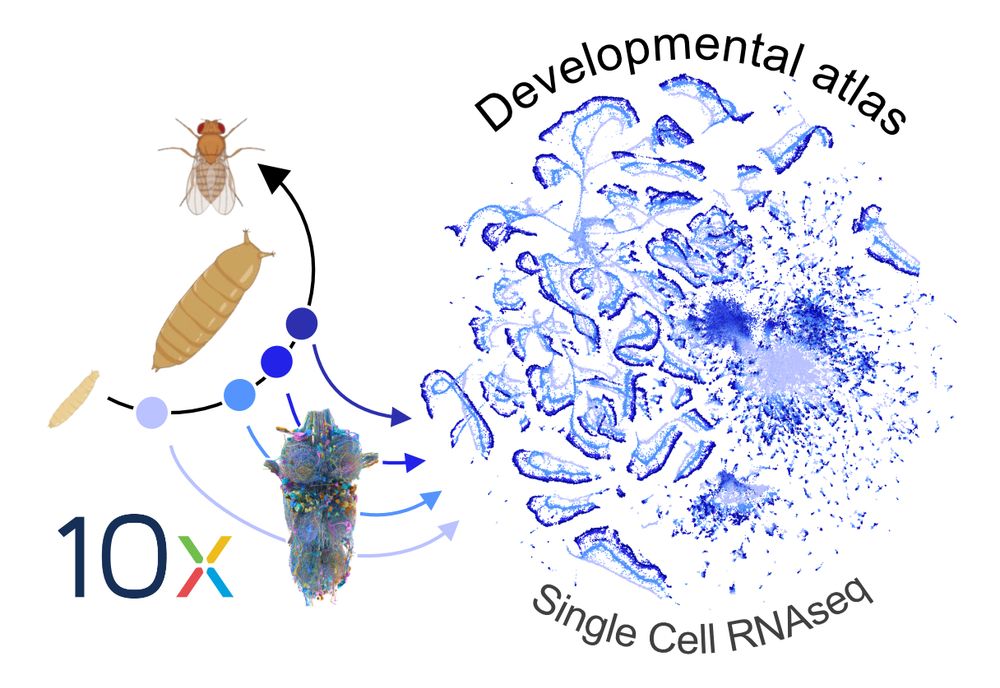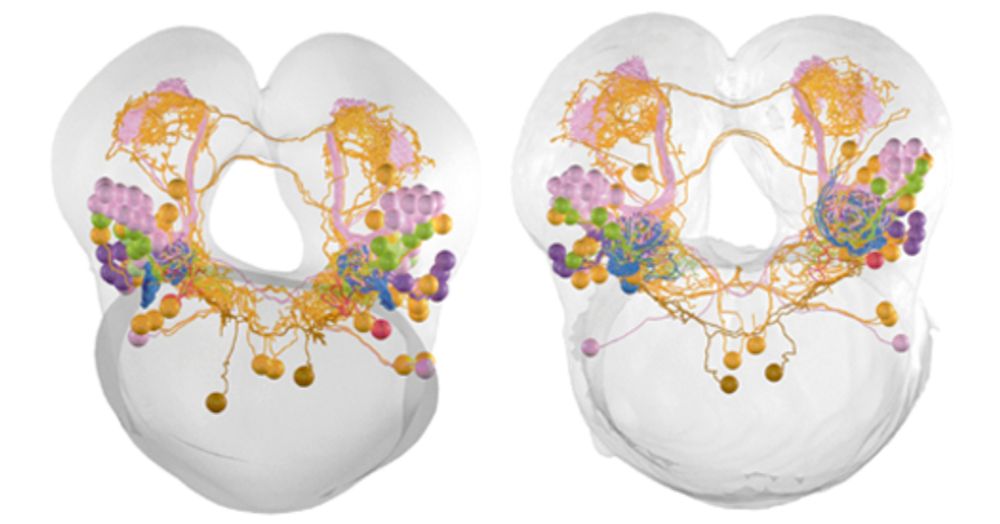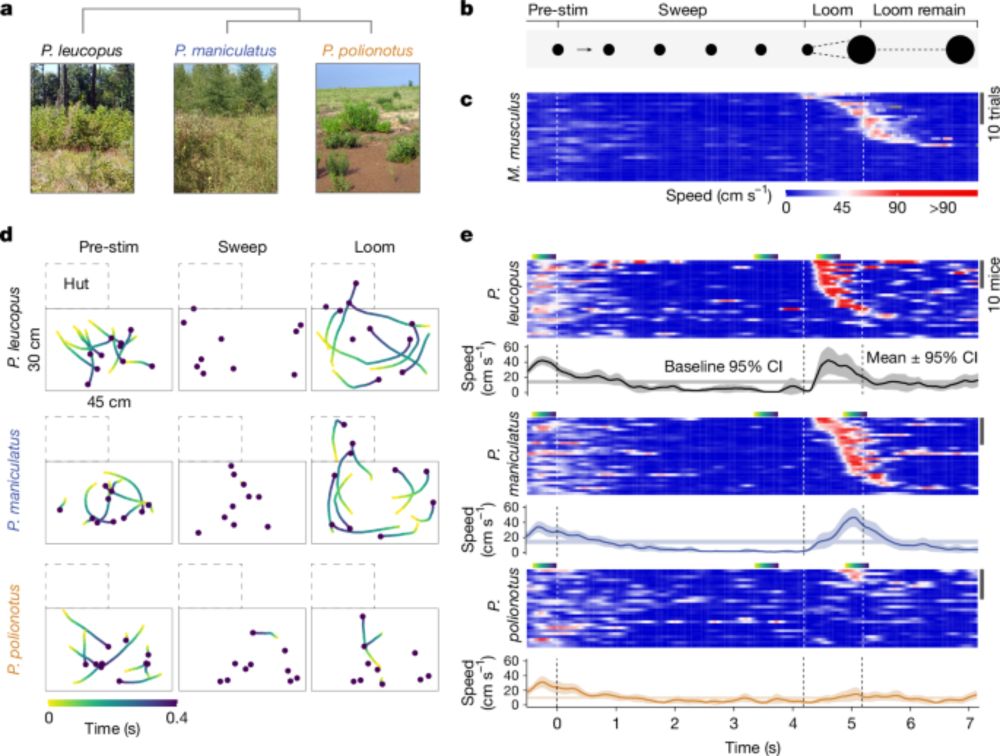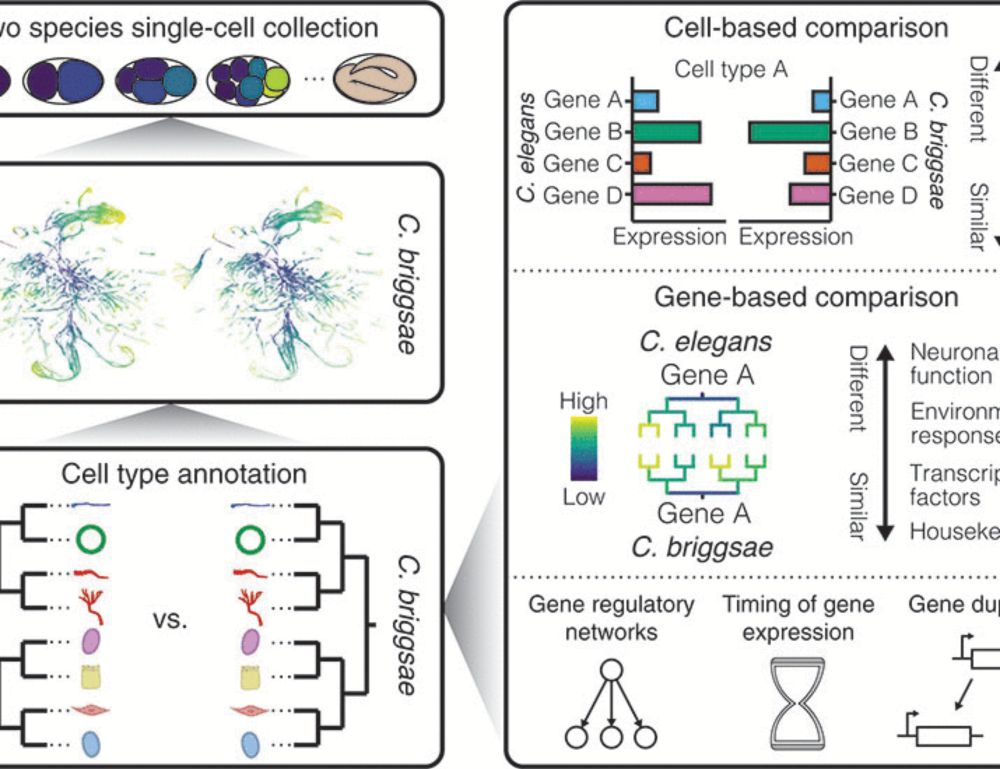Working on evolution of neuronal circuits #Drosophila
#Neuroscience | #Evolution | Neuronal #Circuits | #Connectome | #Olfaction 🪼🪰
We compared deer mice evolved in forest vs prairie habitats. We found that forest mice have:
(1) more corticospinal neurons (CSNs)
(2) better hand dexterity
(3) more dexterous climbing, which is linked to CSN number🧵
We compared deer mice evolved in forest vs prairie habitats. We found that forest mice have:
(1) more corticospinal neurons (CSNs)
(2) better hand dexterity
(3) more dexterous climbing, which is linked to CSN number🧵
Our latest in @natrevneuro.nature.com
Link: rdcu.be/eMX3E
@jeffcolgren.bsky.social @msarscentre.bsky.social

Our latest in @natrevneuro.nature.com
Link: rdcu.be/eMX3E
@jeffcolgren.bsky.social @msarscentre.bsky.social
buff.ly/XDmo4Ue
buff.ly/XDmo4Ue
This collaborative work (co-led by Adriane Otopalik and Gerry Rubin) examines how neuronal circuits regulate social behaviors, like courtship🫶 and aggression🥊, across sexes. #neuroscience #Drosophila #WomenInSTEM 🧪1/
This collaborative work (co-led by Adriane Otopalik and Gerry Rubin) examines how neuronal circuits regulate social behaviors, like courtship🫶 and aggression🥊, across sexes. #neuroscience #Drosophila #WomenInSTEM 🧪1/

We discovered that the fruit fly #drosophila erecta requires food odor to mate and arousal is further enhanced by social group motion.
Cross-species analysis of brain activity reveals a novel gate evolved from within a conserved circuit
shorturl.at/gGYm7

We discovered that the fruit fly #drosophila erecta requires food odor to mate and arousal is further enhanced by social group motion.
Cross-species analysis of brain activity reveals a novel gate evolved from within a conserved circuit
shorturl.at/gGYm7
“Sexual dimorphism in the complete connectome of the Drosophila male central nervous system” www.biorxiv.org/content/10.1...
We describe the #connectomics reconstruction and analysis of an entire adult #maleCNS #drosophila central nervous system. 1/10
“Sexual dimorphism in the complete connectome of the Drosophila male central nervous system” www.biorxiv.org/content/10.1...
We describe the #connectomics reconstruction and analysis of an entire adult #maleCNS #drosophila central nervous system. 1/10
Hear our Director, Edith Heard, explain why the Crick is a unique place for curiosity-driven research.
Apply now ➡️ www.crick.ac.uk/careers-stud...
Hear our Director, Edith Heard, explain why the Crick is a unique place for curiosity-driven research.
Apply now ➡️ www.crick.ac.uk/careers-stud...
www.biorxiv.org/content/10.1...

www.biorxiv.org/content/10.1...

What started as an attempt to compare CT scans of diverse fly brains, ended up a new concept for analysis & segmentation of difficult tomographic data. No ground truths, no training, just maths. This is TopoTome, topological data analysis of 3D images
www.biorxiv.org/content/10.1...

What started as an attempt to compare CT scans of diverse fly brains, ended up a new concept for analysis & segmentation of difficult tomographic data. No ground truths, no training, just maths. This is TopoTome, topological data analysis of 3D images
www.biorxiv.org/content/10.1...
authors.elsevier.com/sd/article/S...
authors.elsevier.com/sd/article/S...
https://bit.ly/4pwPFLY
https://bit.ly/4pwPFLY
emploi.cnrs.fr/Offres/CDD/U...
emploi.cnrs.fr/Offres/CDD/U...
To find out we built a #scRNAseq developmental atlas of the Drosophila nerve cord and linked it to the #connectome 🪰🧠
#preprint thread ⬇️1/8

To find out we built a #scRNAseq developmental atlas of the Drosophila nerve cord and linked it to the #connectome 🪰🧠
#preprint thread ⬇️1/8
That is exactly what this experiment demonstrated. Manipulation of one gene made one species of fruit fly gain the behavior of another. 🧪
Link: www.science.org/doi/10.1126/...

That is exactly what this experiment demonstrated. Manipulation of one gene made one species of fruit fly gain the behavior of another. 🧪
Link: www.science.org/doi/10.1126/...
By @martajhill.bsky.social
#neuroskyence
www.thetransmitter.org/connectome/c...

www.biorxiv.org/content/10.1...

www.biorxiv.org/content/10.1...
By @martajhill.bsky.social
#neuroskyence
www.thetransmitter.org/connectome/c...

By @martajhill.bsky.social
#neuroskyence
www.thetransmitter.org/connectome/c...
Preprint: doi.org/10.1101/2025...
#Neuroscience #Connectomics #vEM #VectorBiology 🧪

Preprint: doi.org/10.1101/2025...
#Neuroscience #Connectomics #vEM #VectorBiology 🧪
doi.org/10.1101/2025...
We used TEM to describe the circuitry used for CO2 detection by mosquitoes. As usual with mosquitoes, nothing is as expected! 🌬️🦟

doi.org/10.1101/2025...
We used TEM to describe the circuitry used for CO2 detection by mosquitoes. As usual with mosquitoes, nothing is as expected! 🌬️🦟
We discovered that evolution, by acting in the midbrain, shifted the threshold to escape in Peromyscus mice, to fine-tune defensive strategies in different environments
www.nature.com/articles/s41...
This was a truly collaborative effort! 🧵⬇️
We discovered that evolution, by acting in the midbrain, shifted the threshold to escape in Peromyscus mice, to fine-tune defensive strategies in different environments
www.nature.com/articles/s41...
This was a truly collaborative effort! 🧵⬇️



